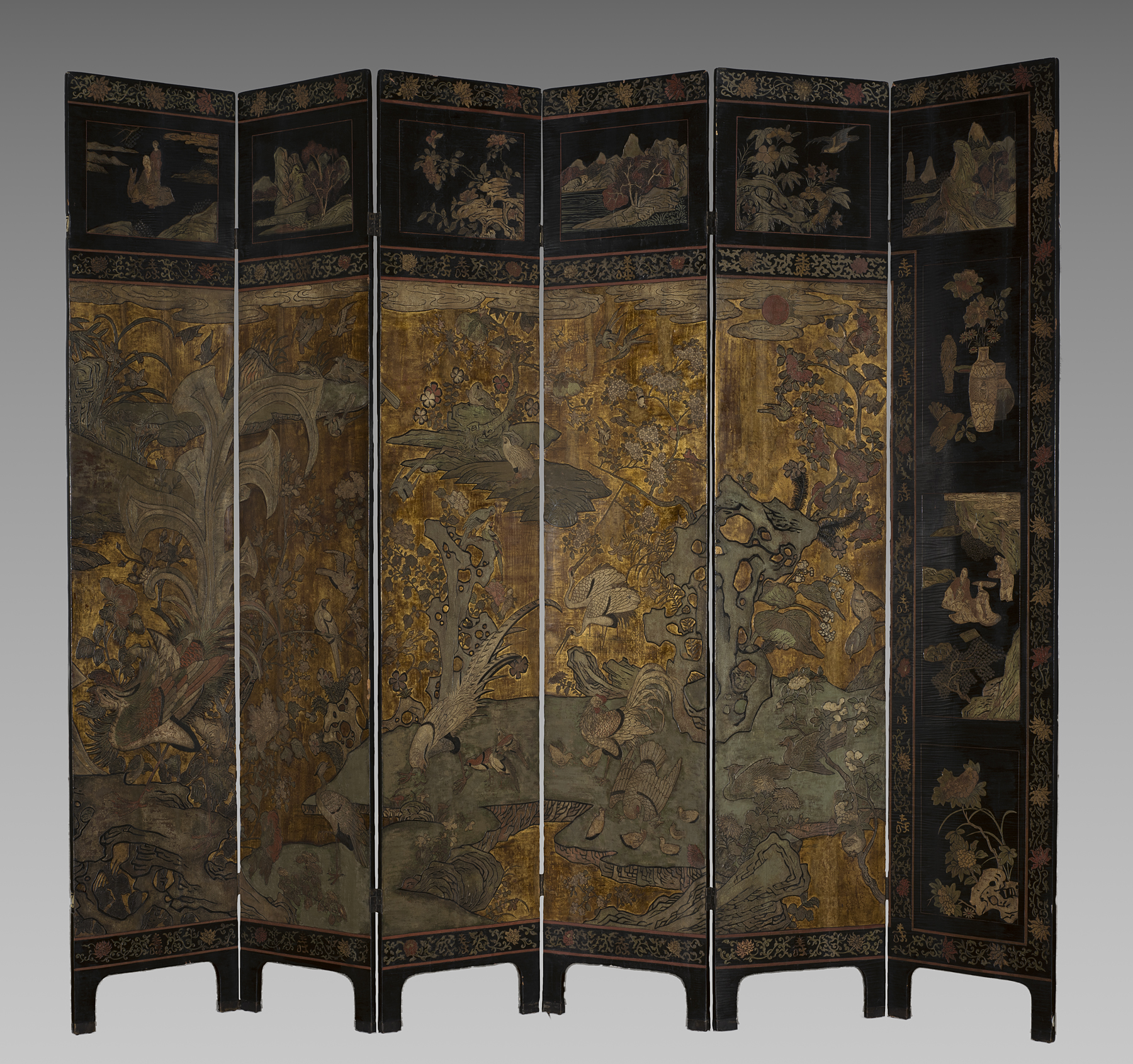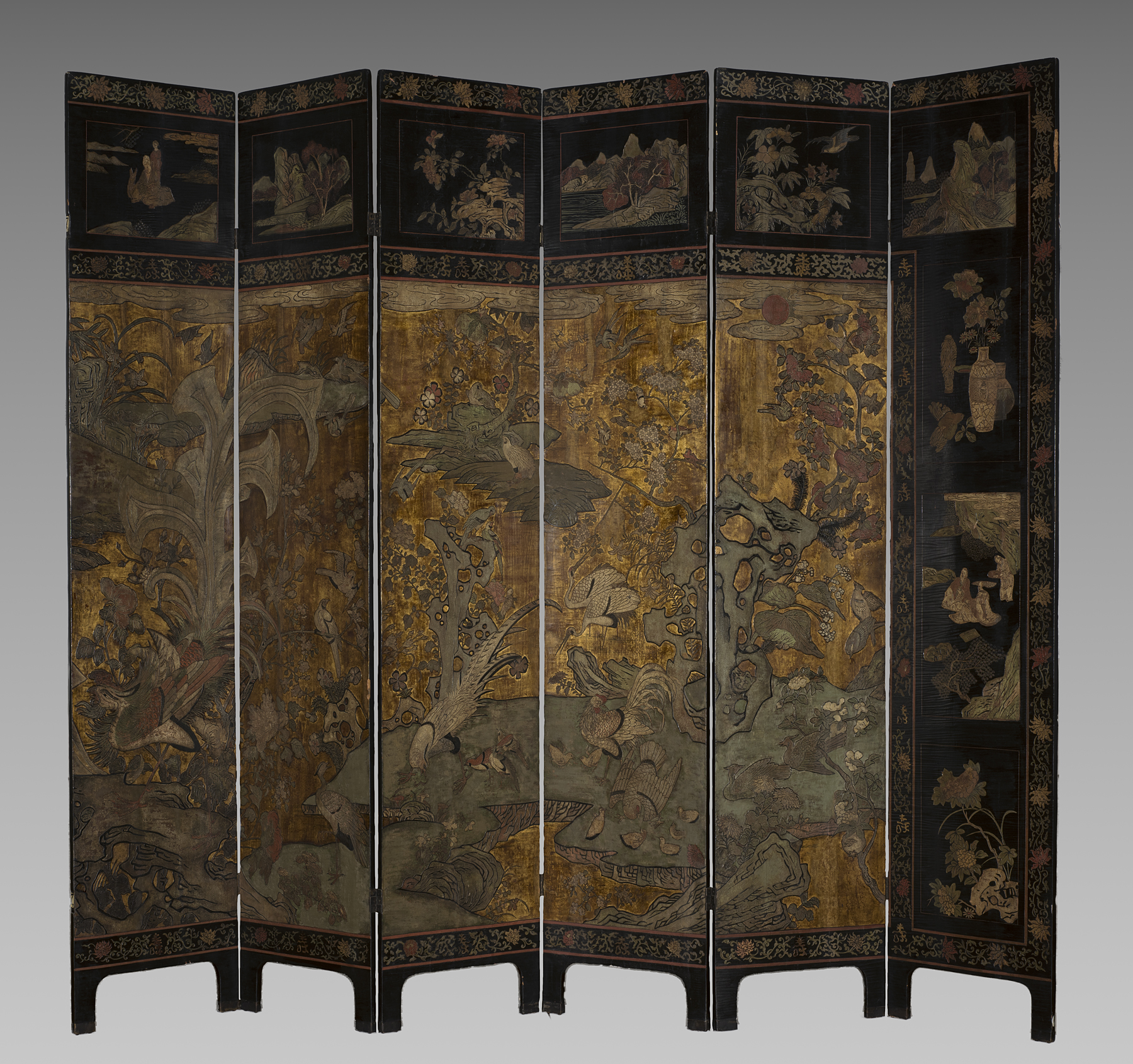pair of screens, unknown maker from China
Artwork Overview
pair of screens
, 1700s–1800s, Qing dynasty (1644–1911)
Where object was made: China
Material/technique: wood; lacquer
Credit line: Bequest of Helen Foresman Spencer
Accession number: 1982.0156.a,b
On display: Long Ellis Gallery
If you wish to reproduce this image, please submit an image request


